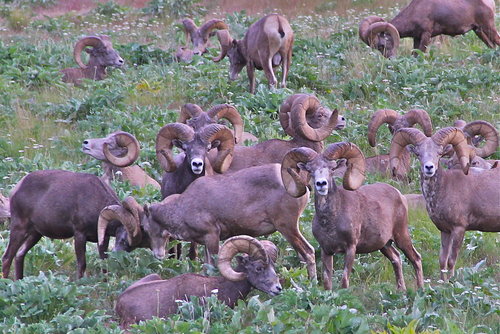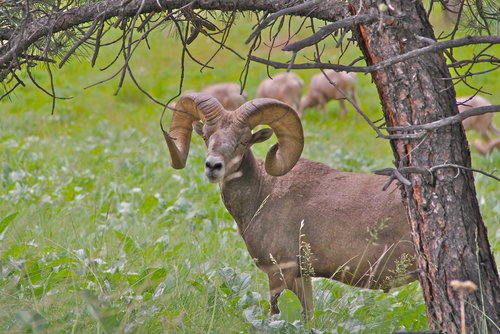BigHornRam
Well-known member
Big horn sheep in the Wyoming wilderness east of the park have all the pathogens that cause die offs. That area was overrun with domestics in the 1800's. Garrott has some good theories on why those sheep are doing ok.
"One herd outside of Montana that has done extremely well and may provide some clues about why most of Montana’s herds are failing to thrive lives in the eastern Greater Yellowstone Area — a region stretching from the Beartooth Plateau across the eastern boundary of Yellowstone National Park. That Wyoming herd numbers around 4,000 animals.
“They have all of the pathogens that cause problems, yet they are doing really well,” Garrott said.
That goes against most institutional knowledge that says bighorn herd numbers should be kept relatively low to avoid big die-offs that have dogged larger herds in Montana. The idea being that more animals gathered together creates a greater chance that one sick bighorn will infect many others. So why isn’t that theory holding up in the Wyoming herd?
That may be because “the (GYA) animals display a tremendous amount of variability in how they use the landscape,” Garrott said. Generally it’s normal for other ungulate species like elk or deer to migrate from low-lying wintering grounds to the mountains in springtime and summer, yet this Wyoming bighorn herd has some animals that live at 9,000 feet year-round. Others live in low-lying areas all year. Some migrate 18 to 25 miles while others migrate to higher ground in the winter.
“They all have the same physiological constraints, but you don’t see that in restored populations. Many are nonmigratory,” Garrott said. “That might be why they are more susceptible to disease — they’re all standing around together. One gets sick, and they all die.”"
He also thinks that most of the sheep there died in the 1800's. The ones that survived had some immunity to these pathogens and passed that on to their offspring. Plausible theory IMO.
"One herd outside of Montana that has done extremely well and may provide some clues about why most of Montana’s herds are failing to thrive lives in the eastern Greater Yellowstone Area — a region stretching from the Beartooth Plateau across the eastern boundary of Yellowstone National Park. That Wyoming herd numbers around 4,000 animals.
“They have all of the pathogens that cause problems, yet they are doing really well,” Garrott said.
That goes against most institutional knowledge that says bighorn herd numbers should be kept relatively low to avoid big die-offs that have dogged larger herds in Montana. The idea being that more animals gathered together creates a greater chance that one sick bighorn will infect many others. So why isn’t that theory holding up in the Wyoming herd?
That may be because “the (GYA) animals display a tremendous amount of variability in how they use the landscape,” Garrott said. Generally it’s normal for other ungulate species like elk or deer to migrate from low-lying wintering grounds to the mountains in springtime and summer, yet this Wyoming bighorn herd has some animals that live at 9,000 feet year-round. Others live in low-lying areas all year. Some migrate 18 to 25 miles while others migrate to higher ground in the winter.
“They all have the same physiological constraints, but you don’t see that in restored populations. Many are nonmigratory,” Garrott said. “That might be why they are more susceptible to disease — they’re all standing around together. One gets sick, and they all die.”"
He also thinks that most of the sheep there died in the 1800's. The ones that survived had some immunity to these pathogens and passed that on to their offspring. Plausible theory IMO.








